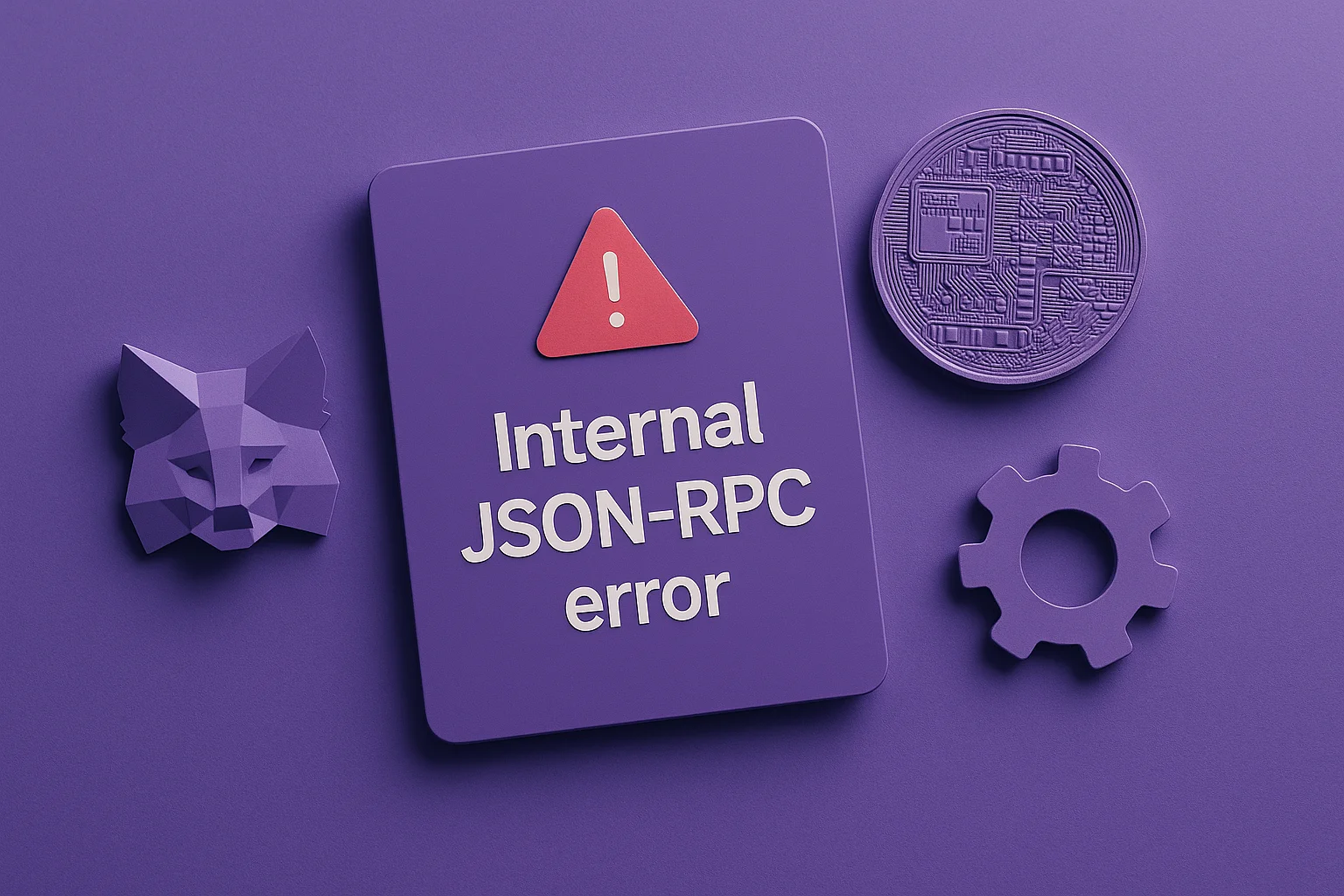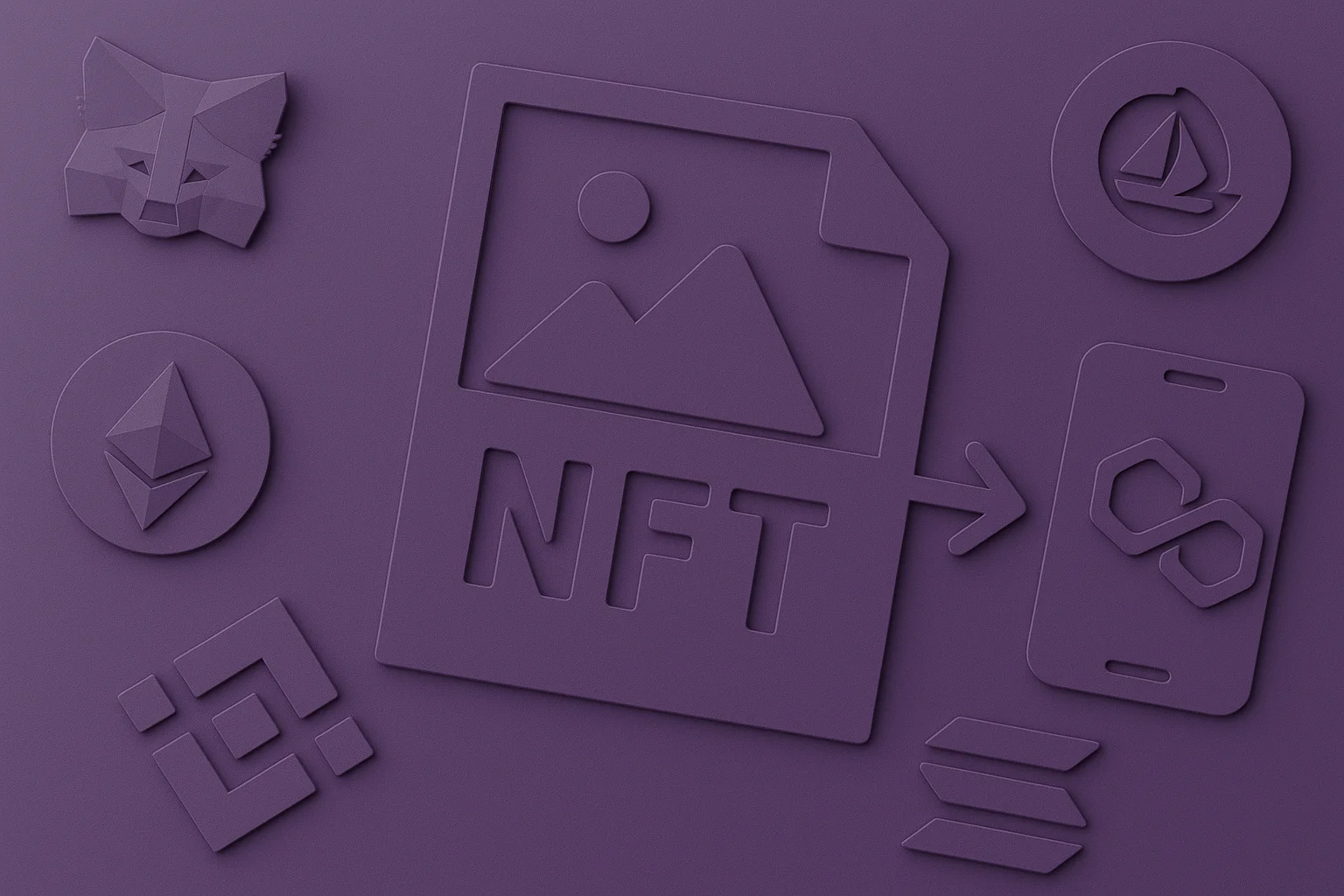How to Use BSC to ETH Bridge Safely | Follow This Easy Guide
A BSC to ETH bridge can be confusing, risky, and expensive if you don’t know what you’re doing. One wrong click and your assets might get stuck or lost forever. On top of that, gas fees and shady bridge tools don’t make it any easier. But it doesn’t have to be that way. Whether moving tokens to chase better yields, trading on […]

A BSC to ETH bridge can be confusing, risky, and expensive if you don’t know what you’re doing. One wrong click and your assets might get stuck or lost forever. On top of that, gas fees and shady bridge tools don’t make it any easier.
But it doesn’t have to be that way. Whether moving tokens to chase better yields, trading on Ethereum, or accessing DApps, this guide walks you through safe, low-cost bridging methods using trusted platforms.
To simplify it, we’ll cover two methods: a DApp bridge (cBridge) and a centralized exchange (Binance) for a more beginner-friendly route.
Let’s break it down step by step, with screenshots, safety tips, and everything else you need to bridge crypto between Binance Smart Chain and Ethereum confidently.
See the Top Layer 1 Blockchains
Explore leading Layer 1 projects shaping the crypto ecosystem—from Ethereum and Solana to new players driving innovation.
Browse the Full ListMethod 1: Using Decentralized Asset Bridge Apps (cBridge or ChainPort)
One of the most popular and reliable ways to bridge between Binance Smart Chain (BSC) and Ethereum is by using decentralized blockchain bridges like cBridge or ChainPort. These tools are purpose-built to securely bridge assets between two networks, helping users easily move digital assets from Binance Chain (also called BNB Chain) to Ethereum.
These decentralized applications (dApps) are designed to support cross-chain bridge operations. They allow users to transfer tokens between blockchain networks with lower gas and minimal network fees, often completing the process in just a few minutes.
Note: Improper use of bridges can lead to the permanent loss of your crypto assets. Always double-check wallet addresses, amounts, and network settings before confirming transactions.
Step 1. Switch Your Wallet to the Binance Smart Chain (BNB Chain)
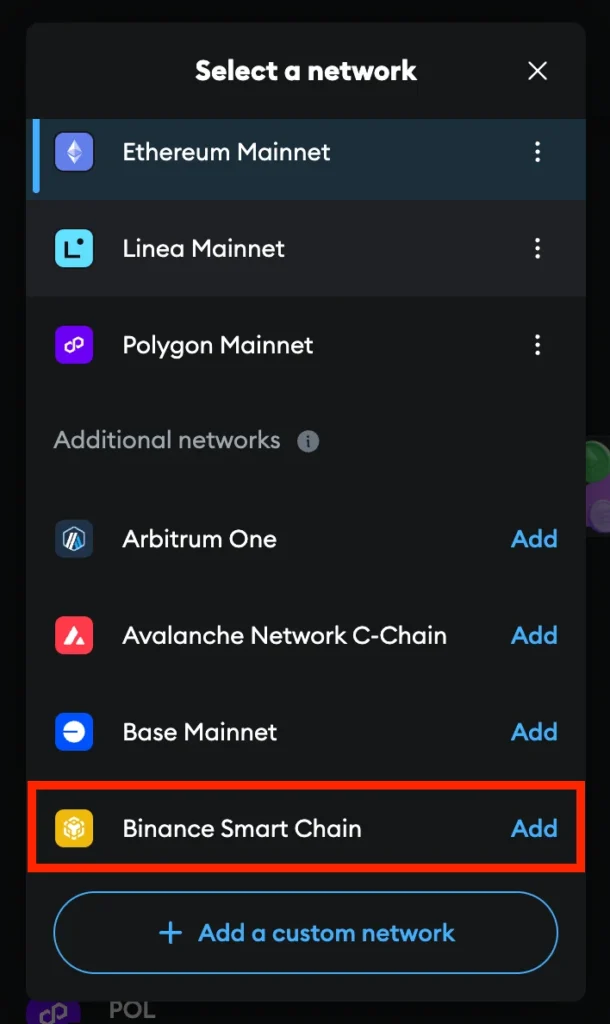
Before bridging tokens, ensure your wallet (such as MetaMask) is connected to the Binance Smart Chain. If “Binance Smart Chain” isn’t already listed, you can manually add it:
- Open MetaMask and click the network selector dropdown;
- Click Add Network;
- Input the network details for Binance Smart Chain BSC;
- Save and switch to BNB Chain.
This prepares your wallet to interact with BSC-based smart contracts and initiates bridging assets to other chains like Ethereum.
Step 2. Visit the Bridge Website and Connect Your Wallet
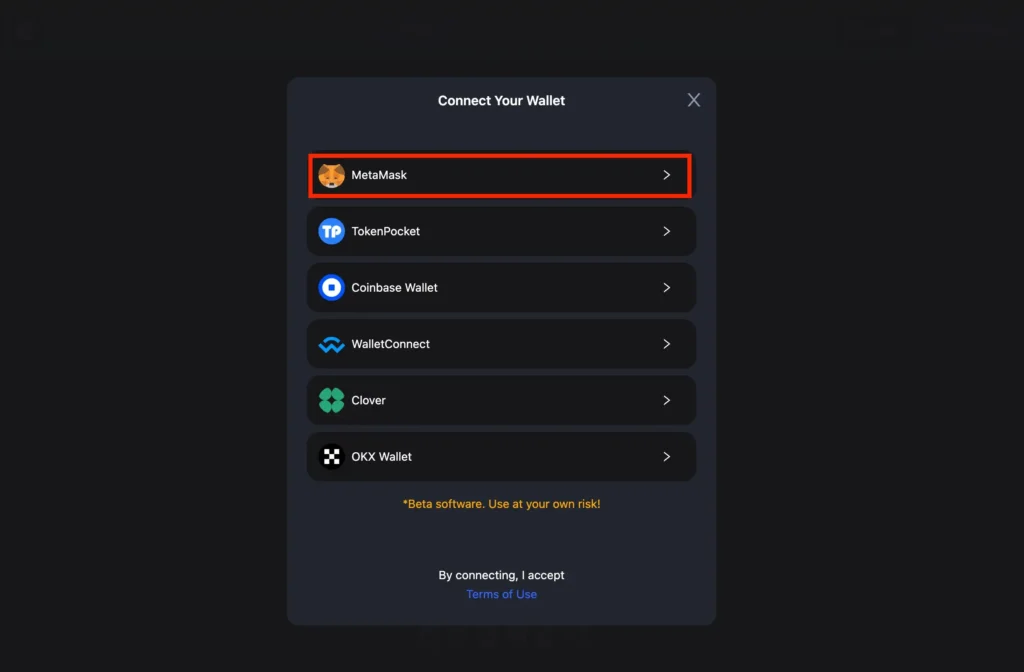
Next, open a browser and go to the cBridge (or ChainPort) website. Click on Connect Wallet, then select MetaMask or another compatible option.
By connecting your wallet, you’re allowing the bridge BNB tool to interact with your private keys in a secure, limited manner, just enough to transfer tokens between different chains.
Step 3. Select Origin and Destination Blockchain Networks
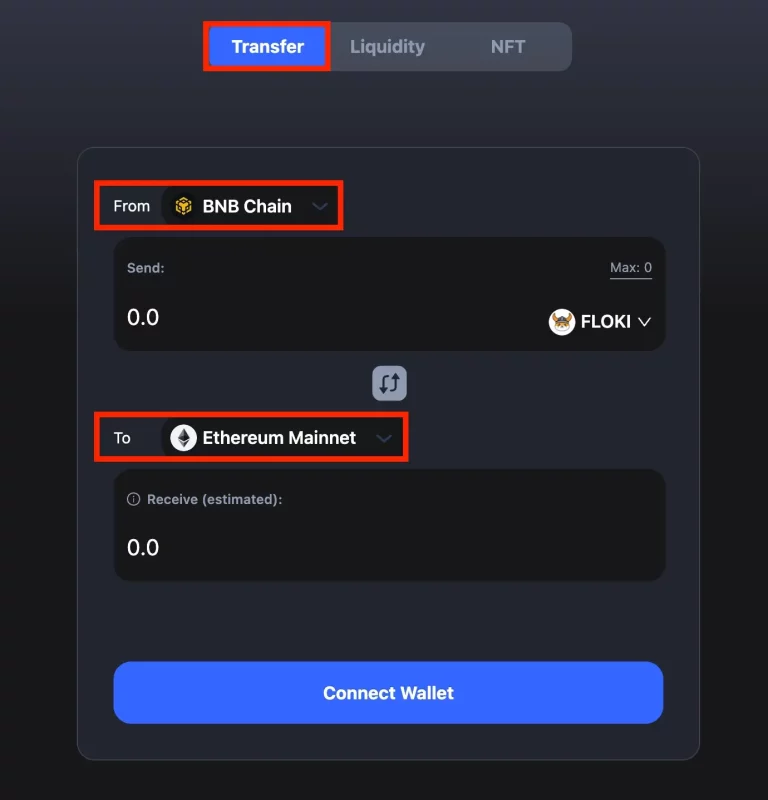
On the interface:
- Under “From,” choose BNB Chain (the Binance Smart Chain);
- Under “To,” select Ethereum Mainnet, powered by the Ethereum Virtual Machine (EVM).
This setup ensures your digital assets are sent across blockchain technology layers correctly.
Step 4. Select the Token and Amount, Then Initiate the Transfer

Choose the token you want to bridge, input the desired amount, and hit Transfer. The bridge interface will calculate associated gas fees, transaction fees, and other fees related to the bridging process, depending on current network activity across Binance Smart Chain and Ethereum.
Step 5. Approve and Confirm the Transaction

Click Approve on the cBridge dialog to enable token spending. Confirm again in MetaMask to authorize the bridge smart contract to spend the tokens. After this, click Confirm Transfer in cBridge.
Wait a few minutes while the bridge handles the transaction. Then, switch your MetaMask network back to Ethereum Mainnet and check your wallet for the newly received tokens.
Looking for the Best Crypto Bridges?
Find out which bridges offer the fastest, safest, and most affordable way to move assets between blockchains.
See the Top BridgesMethod 2: Bridging via Binance Exchange (BSC to Ethereum Mainnet)
Another secure and user-friendly method to bridge between Binance Smart Chain and Ethereum Mainnet is the Binance exchange. This method benefits end users who prefer centralized platforms for asset transfer between different blockchain networks. While it may not offer the fastest speeds, it provides reliability, enhanced security services, and current information asset tracking.
Step 1. Initiate a Deposit on Binance Exchange
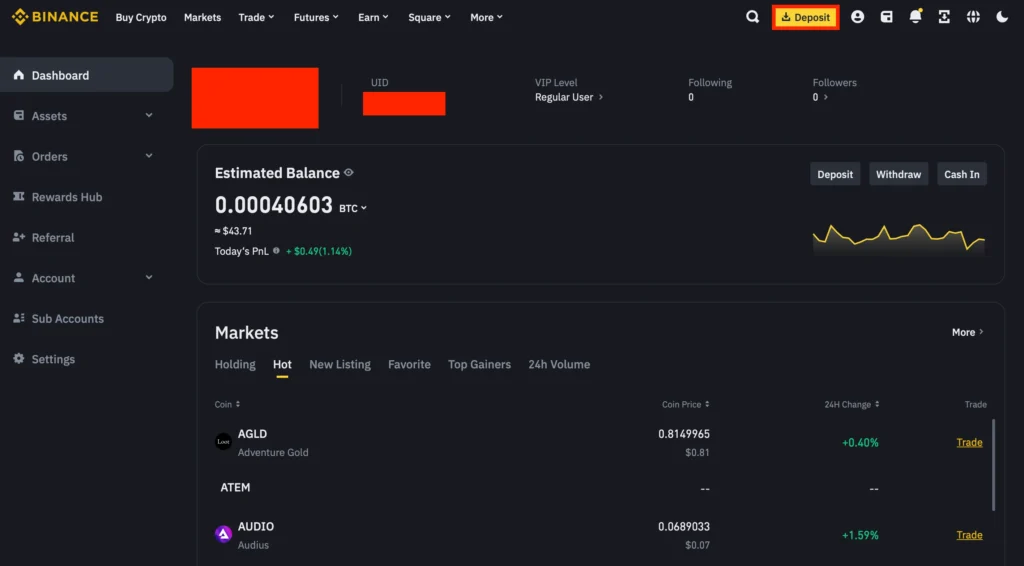
Log in to your Binance account via the official Binance website or mobile app. Click on the “Deposit” button in the upper-right corner. Choose “Deposit Crypto” to start bridging tokens from the Binance Smart Chain to the Ethereum Mainnet.
Step 2. Choose Your Token and Network
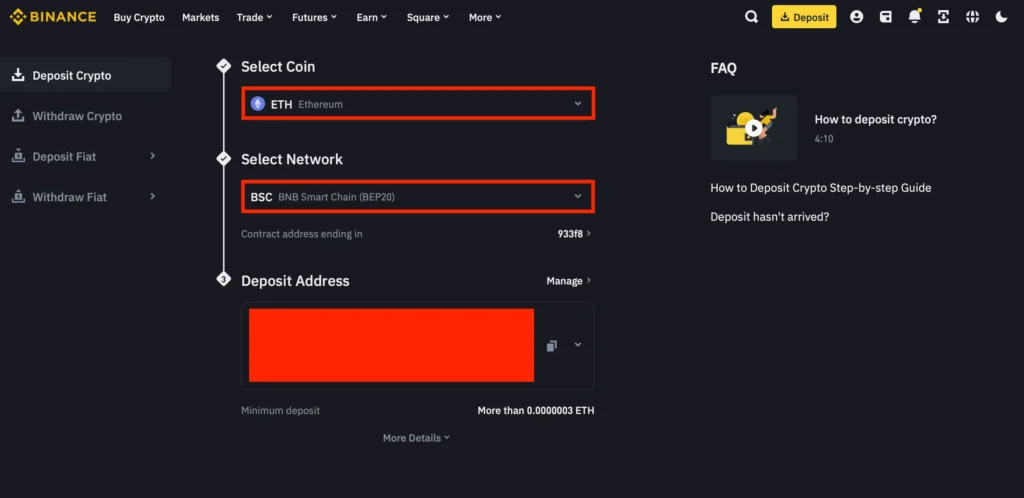
Select the token you intend to bridge (e.g., ETH, USDT, or BUSD). In the dropdown menu, choose the BNB Smart Chain (BEP20) as the deposit network.
Binance will then generate a wallet address on the BSC for that specific token. Copy this BEP20 address (it will be used in the next step to transfer the selected crypto assets to the Binance platform).
Step 3. Send Tokens from MetaMask to Binance
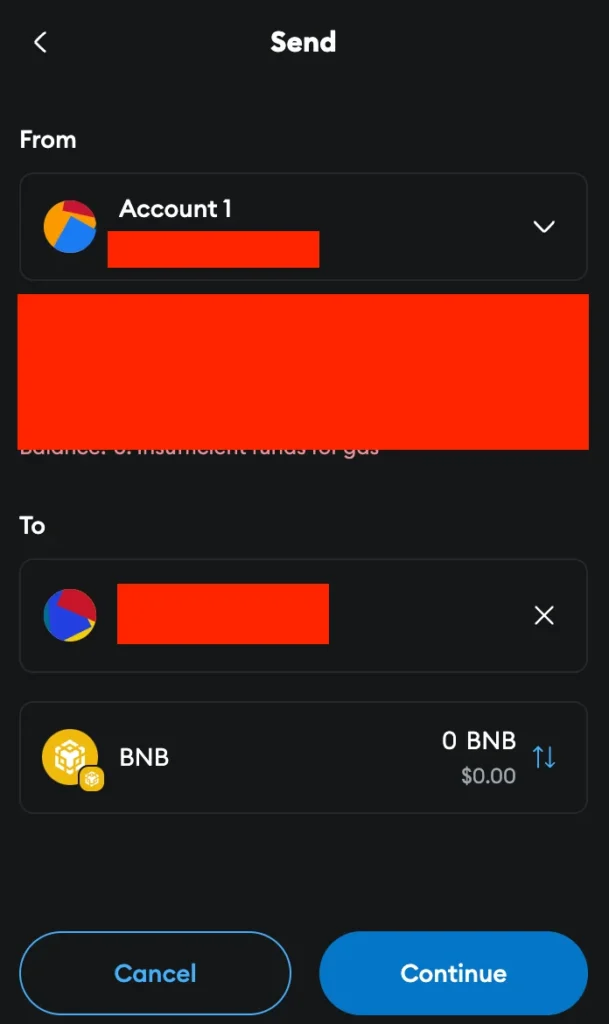
Open your MetaMask wallet and switch the network to Binance Smart Chain. Navigate to the token you selected earlier, and click “Send.” Paste the BEP20 wallet address you copied from Binance in the address field.
Input the send amount, double-check all transaction details, including gas fees and network, then click “Next.” Review and confirm the transaction to complete the first part of your cross-chain asset bridge.
Step 4. Withdraw to Ethereum Mainnet (MetaMask)
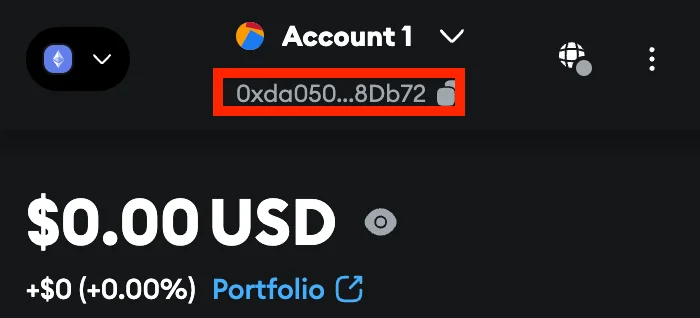
Once your assets arrive in your Binance account, it’s time to send them back out—this time via the Ethereum Mainnet.
- Open MetaMask and switch to the Ethereum network;
- Copy your ERC-20 wallet address;
- On Binance Exchange, navigate to Fiat and Spot Wallet > Withdraw;
- Select the same token (e.g., ETH), paste your ERC-20 address, and choose Ethereum (ERC20) as the withdrawal network;
- Input the amount you want to transfer, then proceed to the two-step verification process (email/SMS);
- Once verified, click “Submit” to approve the transaction.
Top DeFi Use Cases Changing Finance
See how decentralized finance is disrupting banking, lending, and pay
FAQ
What is a crypto or blockchain bridge?
A crypto or blockchain bridge is a tool that allows users to transfer assets between two different networks, such as Binance Smart Chain (BSC) and Ethereum (ETH). It connects decentralized apps across ecosystems, helping users bypass limitations, lower fees, and access funds on other networks.
Can I bridge from BNB to ETH?
You can bridge BNB to ETH using a cross-chain bridge that supports Binance Smart Chain and Ethereum. The process involves sending your BNB through the bridge and receiving equivalent tokens on the Ethereum network, typically as wrapped assets like wETH.
Why do people bridge from BSC to ETH?
People bridge from BSC to ETH to access decentralized apps available on Ethereum, take advantage of better liquidity, or move assets for specific trading opportunities. The Ethereum network often offers broader DApp compatibility despite higher costs.
What are the benefits of using a BSC to ETH bridge?
Using a BSC to ETH bridge gives you access to Ethereum-based assets, dApps, and liquidity pools while keeping your Binance wallet connected. It helps reduce network restrictions, allows for better trading options, and opens up more use cases across both chains.
How can you stay safe while using a bridge between BSC and ETH?
To stay safe, use only well-known bridges, verify all URLs, and avoid clicking unknown trade links. Always use a non-custodial wallet, double-check the token addresses, and be aware of gas fees and transaction costs on both networks before bridging.
What is the best cross-chain bridge for BSC and Ethereum?
The best bridge for BSC and Ethereum depends on your needs, but options like cBridge and ChainPort are popular due to their reliability, lower fees, and wide token support. Before starting the transfer, ensure the bridge supports your wallet and assets.
Is bridging crypto safe?
Bridging crypto is safe when done through trusted platforms with strong security measures. However, some bridges carry risks due to smart contract bugs or phishing scams. Always verify the bridge’s legitimacy and start with a small test amount before sending significant funds.
Final Thoughts
You should now feel confident in bridging ETH safely and efficiently, whether using decentralized apps (DApps) or a centralized exchange like Binance. The popular bridges we highlighted (such as cBridge and ChainPort) make it simple to bridge ETH from BSC with lower fees and reduced risk.
Always verify your network, wallet address, and fee details before confirming any transaction. Taking a moment to double-check can prevent lost crypto or failed transfers.

